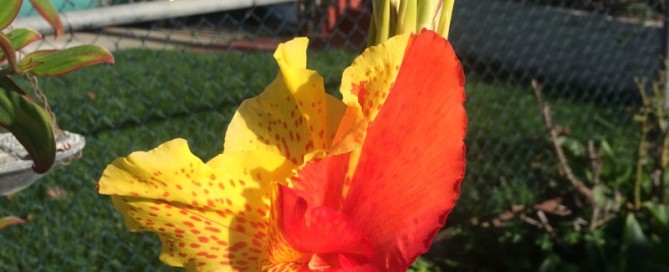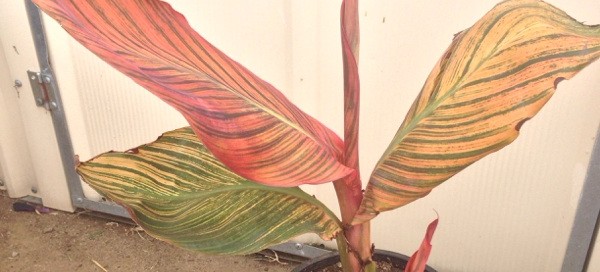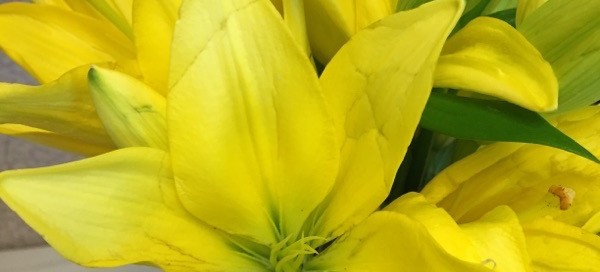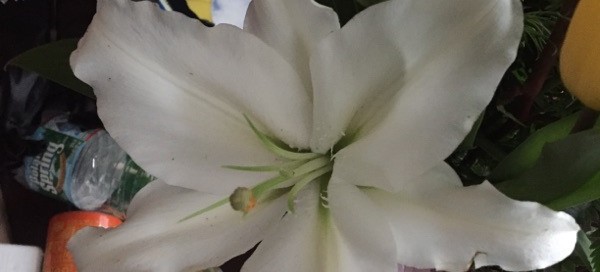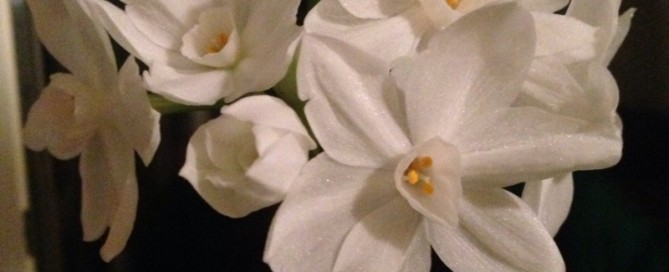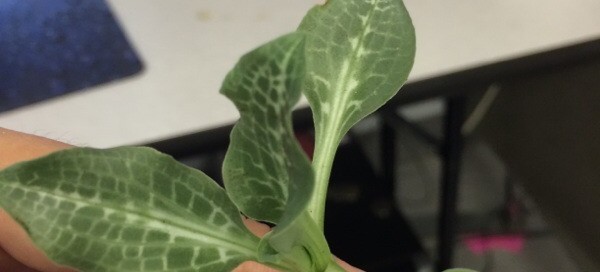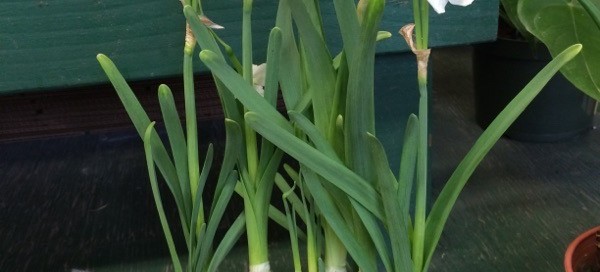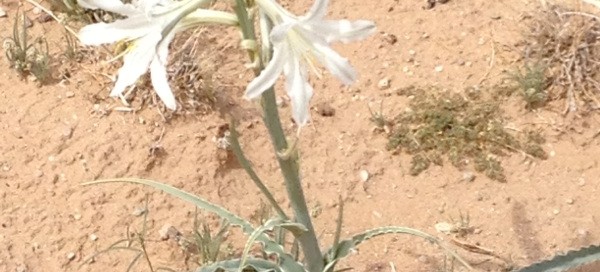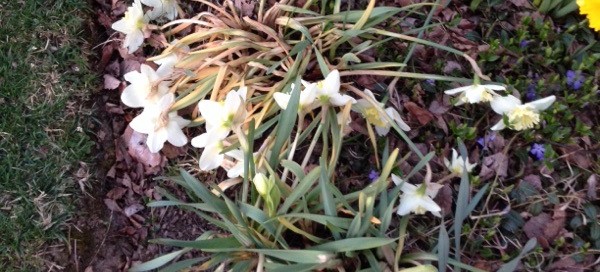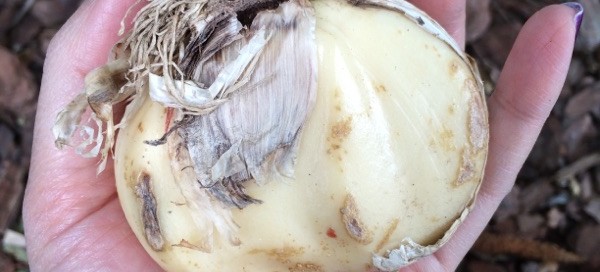Canna Lily
This appears to be a Canna lily. Cannas are prized for their showy leaves and striking spikes of large flowers in reds, oranges, white, cream, yellow, pink or bicolors. They develop from rhizomes and do best in full sun and regular water during growth and bloom cycles but will live on year after year with little care. In mild winter areas such as where you live, Cannas can be left in the ground all year long. Where winter frosts are common, the rhizomes can be dug up and stored in a cool, dry place until the danger of frost has passed and re-planted. Yours might be the 'Yellow King Humbert' cultivar known for its highly unstable coloration and contrasting markings in red and orange. There are however many, many cultivars in a a variety of stunning hues and bi-colors.
